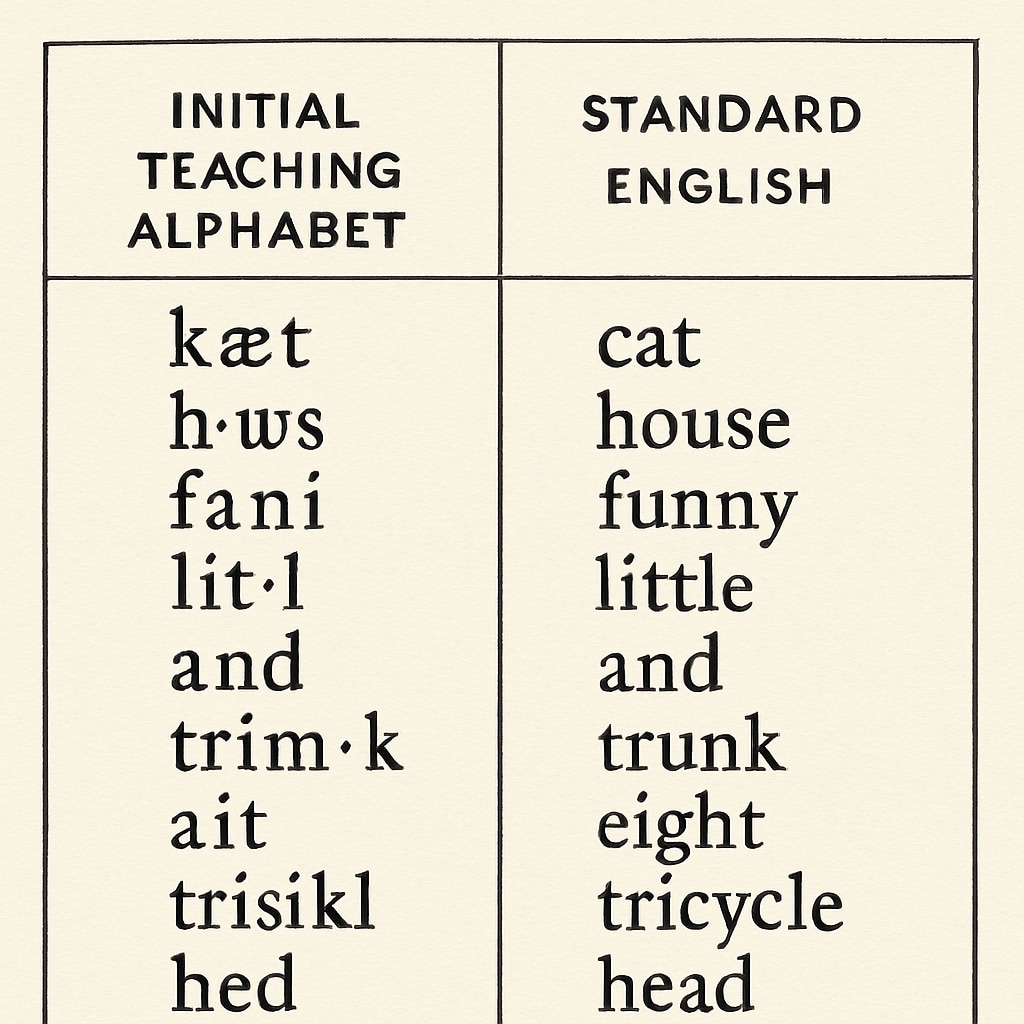The Initial Teaching Alphabet, introduced as an educational innovation in the 1970s, was designed to simplify reading and writing for young learners. However, this well-intentioned experiment left a lasting legacy of spelling difficulties, which still affects many adults today. By examining the origins of this method, its implementation in schools, and the unintended consequences, we can better understand how this seemingly revolutionary approach ultimately disrupted traditional literacy development.
The Origins of the Initial Teaching Alphabet
The Initial Teaching Alphabet (ITA) was developed by Sir James Pitman, a British educator, in the early 1960s. ITA consisted of a 44-character phonetic alphabet designed to represent English sounds more consistently than the traditional 26-letter alphabet. The goal was to make reading and spelling more intuitive for beginners by removing irregularities in English orthography.
This experimental method gained traction in the UK and the US, especially during the 1970s, as schools sought innovative ways to improve literacy rates. At first, ITA seemed promising, as many children were able to read earlier and more confidently. However, the method’s benefits came with significant drawbacks in the long term.

Short-Term Gains vs. Long-Term Struggles
One of ITA’s primary advantages was its simplicity. For example, the word “phone” would be spelled “fon,” and “laugh” would appear as “laf.” This phonetic consistency helped children decode words more easily, reducing the frustration often associated with early reading. However, this simplified system created a disconnect when students transitioned to standard English spelling. Many struggled to abandon the ITA spellings they had internalized, leading to confusion and persistent errors.
As a result, adults who were taught using ITA often report challenges with spelling even decades later. Words with irregular spellings, which ITA intentionally avoided, became stumbling blocks in adulthood. Furthermore, the method unintentionally reinforced the idea that phonetic spelling was “correct,” making it harder for learners to adapt to the complexities of standard English.
The Lingering Effects on Spelling Proficiency
The long-term impact of ITA on spelling proficiency has been well-documented. Studies conducted in the years following the method’s implementation revealed that while ITA learners initially outperformed their peers in reading, they lagged behind in spelling accuracy as they progressed through school. This performance gap often persisted into adulthood, as those taught with ITA found it difficult to fully unlearn the phonetic spellings they had been encouraged to use.
Moreover, the ITA method inadvertently contributed to a lack of confidence in traditional spelling. Adults who experienced this teaching approach frequently report feeling insecure about their writing abilities, particularly in professional or academic settings. These challenges highlight the importance of aligning early literacy methods with long-term goals for language mastery.

Lessons Learned from the ITA Experiment
The ITA experiment offers valuable insights into the complexities of literacy education. While the method’s proponents were motivated by a desire to make learning more accessible, the unintended consequences underscore the risks of departing too far from established practices. Educators and policymakers can draw several lessons from this experience:
- Balance is key: Teaching methods should prioritize both short-term accessibility and long-term mastery.
- Transition planning: Any educational innovation must include clear strategies for transitioning students to traditional systems.
- Research and evaluation: Comprehensive studies should assess the long-term impacts of experimental methods before widespread adoption.
Today, ITA is rarely used, but its legacy serves as a cautionary tale for educators exploring new approaches to literacy instruction.
Conclusion: Reflecting on the ITA’s Educational Legacy
The Initial Teaching Alphabet was an ambitious attempt to simplify the complexities of English for young learners. While it achieved some success in early reading fluency, its negative impact on spelling skills highlights the importance of a holistic approach to education. By examining the successes and failures of past experiments like ITA, we can strive to create teaching methods that empower learners without causing unintended setbacks.
The 1970s may have marked the peak of ITA’s popularity, but its effects are still felt today. Many adults continue to grapple with the spelling challenges introduced by this method, offering a stark reminder that even the best-intentioned innovations must be carefully considered before implementation.
Readability guidance: Short paragraphs and clear transitions enhance understanding. Lists summarize key points succinctly. Active voice is prioritized to improve engagement.


